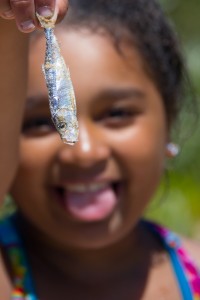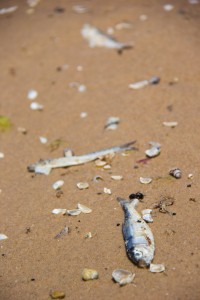Last week we started noticing large numbers of dead and dying alewife and goby around the islands. Nothing unusual to see a few dead fish here and there but not hundreds and then thousands. And not just one species but two were dying.
Concerned thoughts of some new and exotic fish plague raced through our heads, so we shot off a concerned email describing our ominous observations. Our email was quickly channeled to the right people, who sent reassuring replies that the fish world was not coming to an end.
Dr. Donald Uzarski, Director of CMU Institute for Great Lakes Research commented that, “Alewife are very susceptible to rapid temperature changes and we had a hypolimnetic upwelling event from the strong winds as the warm epilimnetic water was pushed across the lake.”
Heather Hettinger, Fisheries Management Biologist with the MDNR agreed with Dr. Uzarski in regard to the alewife and added, “… we are seeing the same situation here on the mainland all up and down the Lake Michigan coastline. The gobies are most likely dying as the result of botulism- something that I see on occasion in areas such as Sleeping Bear Dunes. Gobies will feed on the bottom, often in areas where decaying algae has created anaerobic conditions where botulism can form. The gobies pick up the toxic bacteria and eventually die from the toxins.”
Biologist Hettinger also sent a link to where you can find out more information on fish kills. The page also has a way for you to report fish kills so that they can be addressed quickly and tracked throughout the state.
Thanks to Dr. Uzarski and Biologist Hettinger for their very quick response to our concerns.

